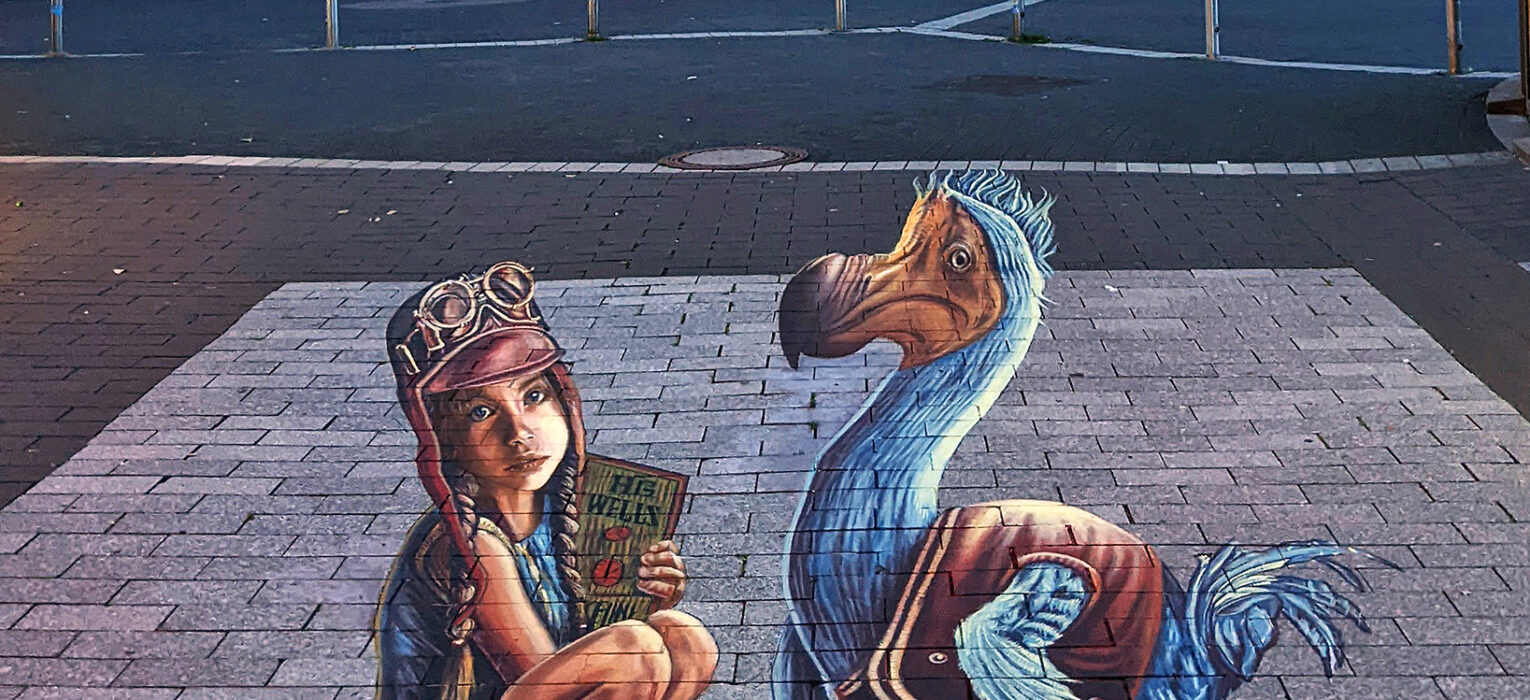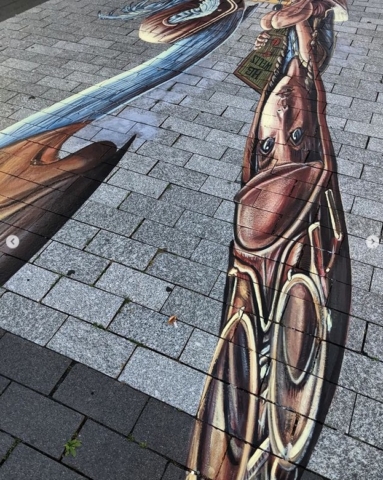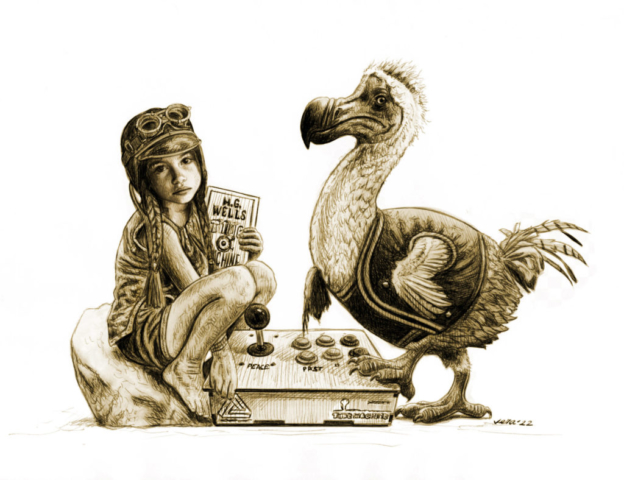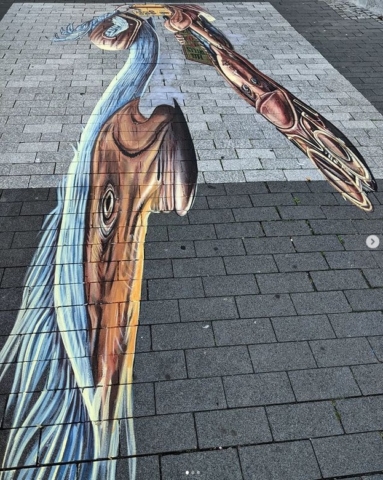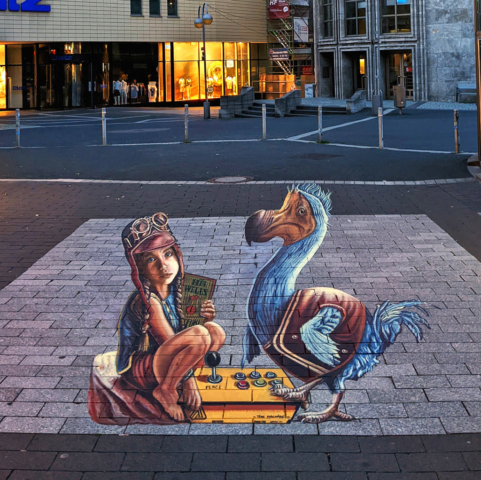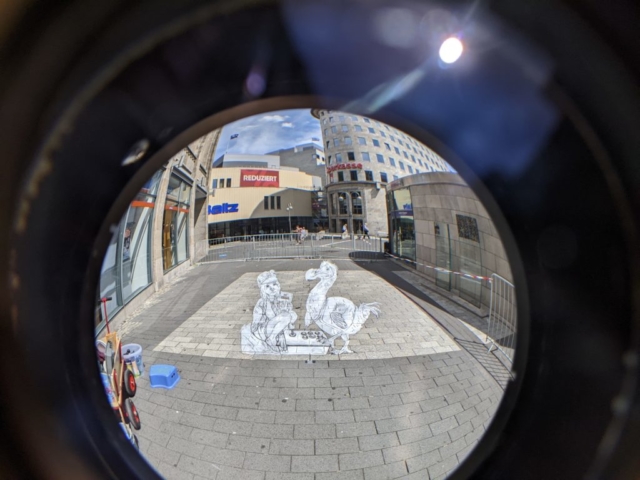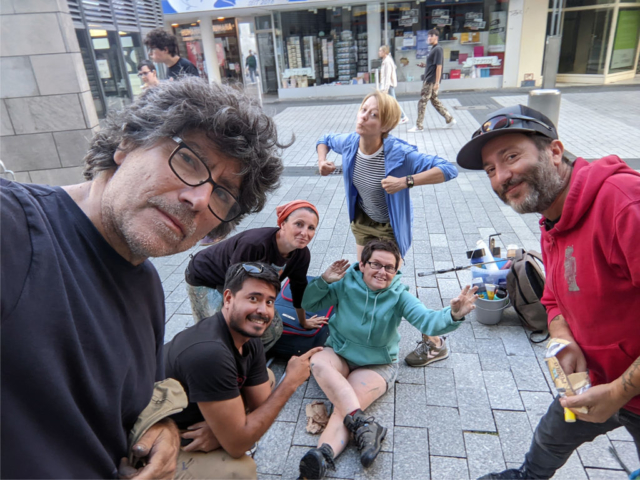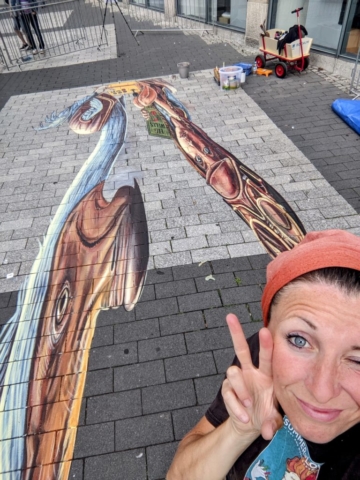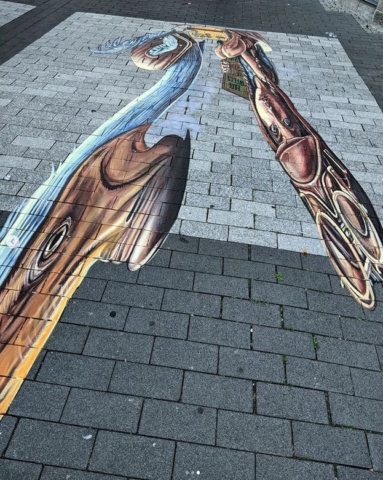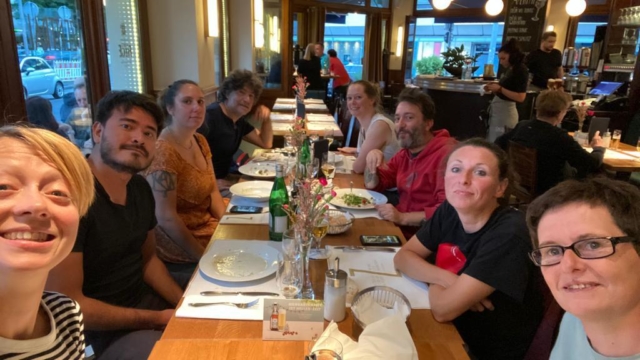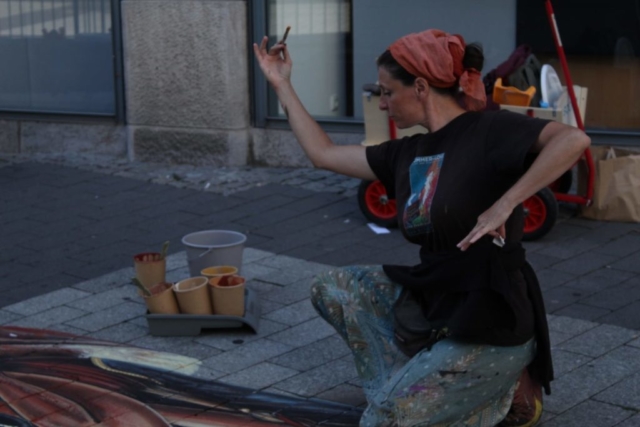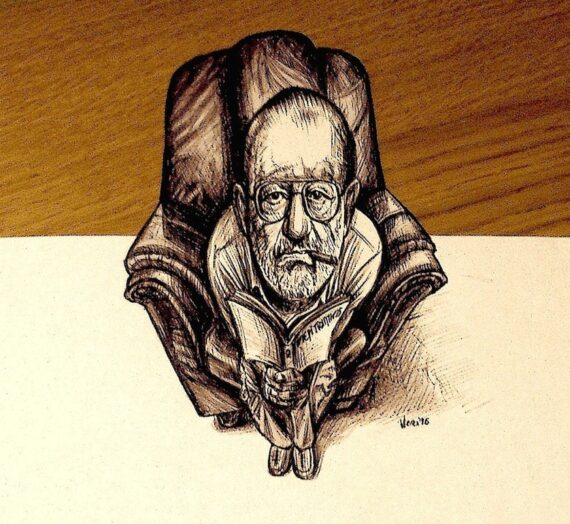“There is a law of nature that we all neglect: intellectual acumen serves to compensate for the instability of fortune, dangers, troubles”
After the grueling PAG project, I set sail for Germany, heading for Dusseldorf, to participate in the 3D street art festival in Bochum together with some long-time friends (whom I gladly found again after two years of event cancellations).
My piece, an anamorphisms on pavement measuring about 3×8 meters, was entitled The time machine.
A little girl in an aviator hat plays with an extinct animal in the time machine. Few colored buttons and some knobs, the present and the past.
It looks like an ironic piece and in fact the astonished Dodo points the knob towards the past with a paw. The girl, however, has a sad look and she points to a knob that instead of indicating the future has an inscription with the word Peace.
In the other hand, barely visible, a book by Wells: The time machine.
In addition to carrying a message of peace, the work wants to pay homage to a book – written in 1895 – that I particularly loved.
The protagonist, simply called the Time Traveler, is a scientist who has developed a machine that allows him to move in the fourth time dimension, as if it were one of the spatial dimensions. Obviously, his theories and tales will be greeted with utter general skepticism. One evening he invites some important people to dinner – including a newspaper editor, a psychologist and a doctor – but he arrives at the table in pitiful condition: dirty, ragged, hungry.
He is back just then from a time travel of over 800,000 years, in an age when human beings have reached the pinnacle of progress.
In the future, however, things are not as expected: intelligence arises from the need to save oneself from dangers, an eventuality that progress has completely eliminated, creating difficulties for people. Humans have split into two main races, the Eloi, harmless and stupid but happy surface creatures, and the Morlocks, a light-terrified underground population of violent disposition and cannibals.
The work is considered by some to be a utopian exploration of the future possibilities of class abolition in the terms that Marx, Fourier and Morris envisioned, by others as an example of “anti-utopian realism” capable of suggesting that harsh class conflicts of the Victorian era could have hardened and even assumed a biological character with humanity divided into two species.
Even good intentions can fail or be distorted, even lead to conflicts. Their number is always high unfortunately. The data collected by the Armed Conflict Location & Event Data Project (ACLED) show that from 30 July 2020 to 30 July 2021 our planet experienced almost 100,000 situations of conflict, including riots, armed clashes, protests, violence against civilians, attacks.
The sad smile of the child girl refers to this impotence we all feel. What if by shifting the lever the future was even worse than the present? Is it possible that we never learn anything?
(e in Italiano)
“Esiste una legge di natura che tutti trascuriamo: l’acume intellettuale serve a compensare l’instabilità della fortuna, i pericoli, i guai”
Dopo l’estenuante progetto di PAG sono salpata di corsa verso la Germania, direzione Dusseldorf, per partecipare al 3D street art festival di Bochum insieme ad alcuni amici di vecchia data (che ho ritrovato tanto volentieri dopo due anni di cancellazioni di eventi).
Il mio pezzo, un’anamorfosi su pavé di circa 3×8 metri, era intitolato The time machine.
Una ragazzina con un copricapo da aviatore gioca con un animale estinto alla macchina del tempo. Pochi tasti colorati e alcune manopole, il presente e il passato.
Sembra un pezzo ironico e infatti il Dodo stupito punta la manopola verso il passato con una zampa. La fanciulla però ha uno sguardo triste e indica una manopola che anziché indicare il futuro reca una scritta con la parola Pace.
Nell’altra mano, poco visibile, un libro di Wells: La macchina del tempo.
Oltre a portare un messaggio di pace l’opera vuole omaggiare un libro – scritto nel 1895 – che ho amato particolarmente. Il protagonista, chiamato semplicemente il Viaggiatore del tempo, è uno scienziato che ha messo a punto una macchina che consente di muoversi nella quarta dimensione temporale, come se fosse una delle dimensioni spaziali.
Ovviamente, le sue teorie e i suoi racconti verranno accolti nell’assoluto scetticismo generale.
Una sera invita a cena alcune persone importanti – tra le quali il direttore di un giornale, uno psicologo e un medico – ma giunge a tavola in condizioni pietose: sporco, cencioso, affamato. Rientra proprio in quel momento da un viaggio nel tempo di oltre 800.000 anni, in un’epoca in cui gli esseri umani sono arrivati all’apice del progresso.
Nel futuro, però, le cose non sono come ci si aspetterebbe: l’intelligenza nasce dalla necessità di salvare sé stessi dai pericoli, eventualità che il progresso ha completamente eliminato creando delle difficoltà alle persone. Gli esseri umani si sono divisi in due razze principali, gli Eloi, creature della superficie innocue e stupide, ma felici, e i Morlock, popolazione sotterranea terrorizzata dalla luce, di indole violenta e cannibali.
L’opera è considerata da alcuni come un’esplorazione utopica delle possibilità future di abolizione delle classi nei termini che Marx, Fourier e Morris immaginarono, da altri come esempio di “realismo anti-utopico” in grado di suggerire che i duri conflitti di classe dell’era vittoriana avrebbero potuto inasprirsi e addirittura assumere un carattere biologico con l’umanità divisa in due specie.
Anche i buoni propositi possono fallire o essere distorti, portare a conflitti addirittura. Il loro numero è sempre alto purtroppo. I dati raccolti dall’Armed Conflict Location & Event Data Project (ACLED) mostrano che dal 30 luglio 2020 al 30 luglio 2021 il nostro Pianeta ha vissuto quasi 100.000 situazioni di conflitto, tra sommosse, scontri armati, proteste, violenze contro civili, attentati.
A questa impotenza che tutti proviamo rimanda in fondo il sorriso triste della bambina. Se spostando la leva il futuro fosse anche peggio del presente? Possibile che non si impari mai nulla?
